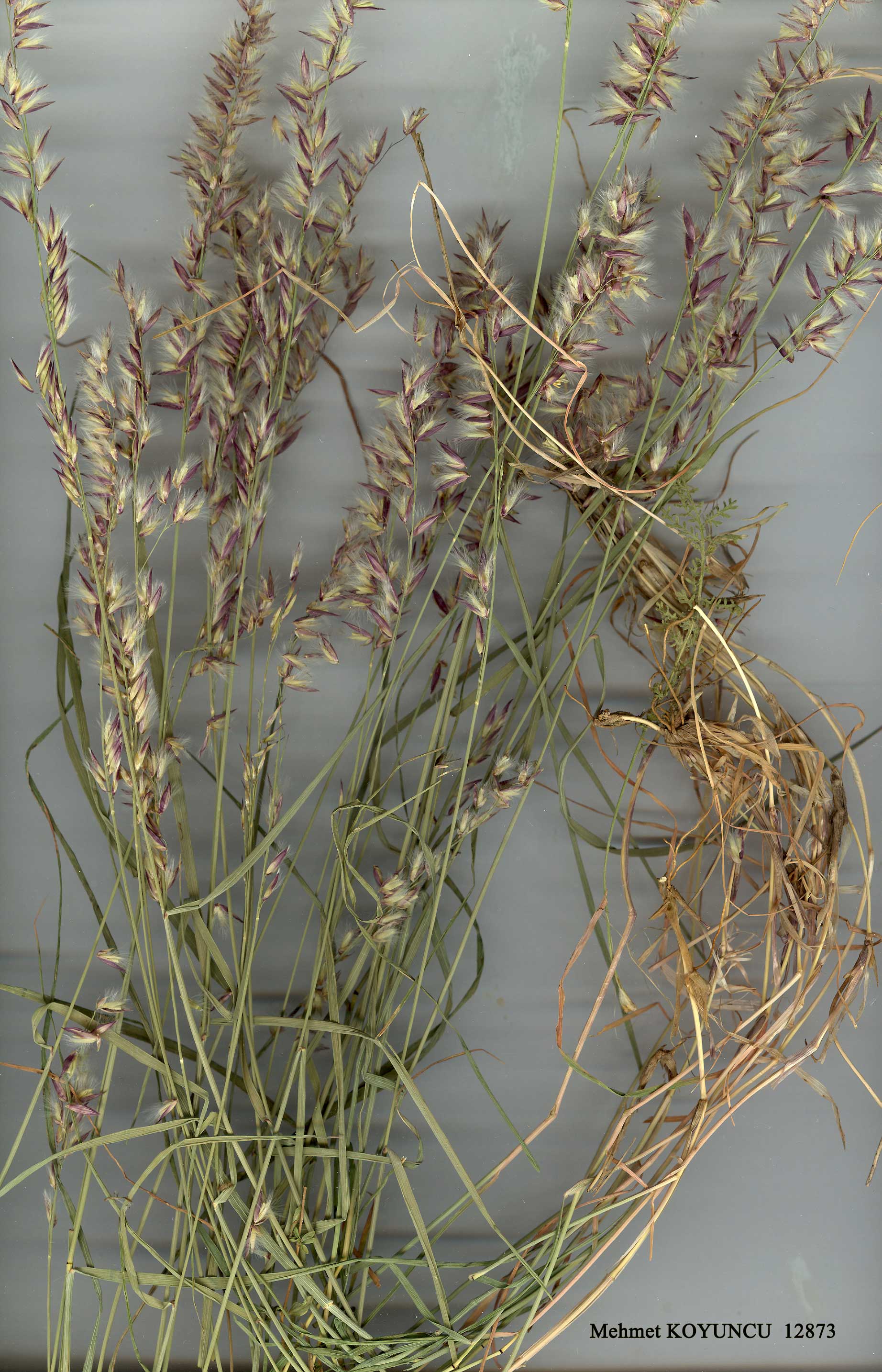| Poaceae |
|---|
 Melica persica KUNTH subsp.persica |
Melica L. |
M. persica Kunth, Rev.Gram. 1:122, t. 89(1830). Ic: Fl. Pakistan 143:447, t. 47 (1982) magnifications as given in caption incorrect by a factor of 10. Tufted, erect or ascending perennial. Stems 20-50 cm, often strict. Leaf sheaths glabrous, scabridulous or hairy; ligule 2-5 mm; blades 1-3 mm broad, ± flat or inrolled, glabrous or hairy, suberect, patent or deflexed. Inflorescence a spike-like panicle, continuous or interrupted, often±secund. Spikelets5-10 mm. Fertile florets 1-2. Spikelet 1.5-3 x lower glume; lower glume ovate, upper elliptic-lanceolate, both acute, straw-coloured or violaceous. Lemma of fertile floret ovate, dorsal veins 9, covered with long silky hairs. Sterile florets forming a hollowed clavate mass. Virtually nothing is known about the causes of the puzzling variation within M. persica sensu lato. One might suspect homologous variation, hybridisation, polyploidy, even apomixis, but the species' very wide distribution in Asia would make biosystematic investigation impracticable. A rather broad sub-specific treatment is adopted here; the status of the hairy-leaved variants is particularly problematical. The restricted synonymy cited is mainly of taxa described from Anatolia and which have been checked against Geneva type material. 1. Leaf sheaths and blades glabrous, papillose, scabridulous or minutely puber- ulent; leaf blades erect or divaricate to deflexed 2. Leaf blades minutely puberulent on upper surface, divaricate to deflexed; spikelets 1.5-2 x lower glume, often violaceous; inflorescence usually of interrupted, shortly pedunculate clusters b. subsp. jacquemontii 2. Leaf blades and sheaths glabrous or minutely scabridulous, suberect; spikelets 2-3 x lower glume, usually stramineous; inflorescence ± continuous, with distinctly pedunculate clusters c. subsp. inaequiglumis 1. Leaf sheaths and blades grey-pubescent with deflexed 0.2-0.5 mm hairs; leaf blades suberect to patent (spikelets ± stramineous or violet-tinged) 3. Spikelets 8-9(-10) mm; leaf sheaths and blades (on both surfaces) densely deflexed-pubescent, blades erecto-patent to divaricate a. subsp. persica 3. Spikelets 6-7(-8) mm; leaf sheaths and blades (on both surfaces) shortly deflexed-velutinous; blade suberect d.subsp. canescens a. subsp. persica. Syn:M. vestita Boiss., Diagn. ser. 1(7): 125 (1846)! M. kot- schyi Hochst. in Steudel, Syn. Pl. Glum. 1:289(1854)! Ic: Kunth, Rev. Gram. 1:122, t. 89 (1830). Map 99. Fl. 5-6. Rocky hills and disturbed calcareous steppe, 1000-1100 m. Type: [Iran] crescit in Persia inter Kermachan(Kermananshah) et Amadan (holo. G!). E. Anatolia. B7 Malatya: S.E. of Malatya, Alava 6857! B9 Van: c. 60 km N. of Van, 1750 m, Sorger 82-42-32! C6 Gaziantep: Dülük Baba c. 7 km N. of Gaziantep, 1100 m, D. 28082! Iraq & Iran to Pakistan & C. Asia. M. atropatana Schischkin, from the southern border of Soviet Armenia, may be synonymous. |